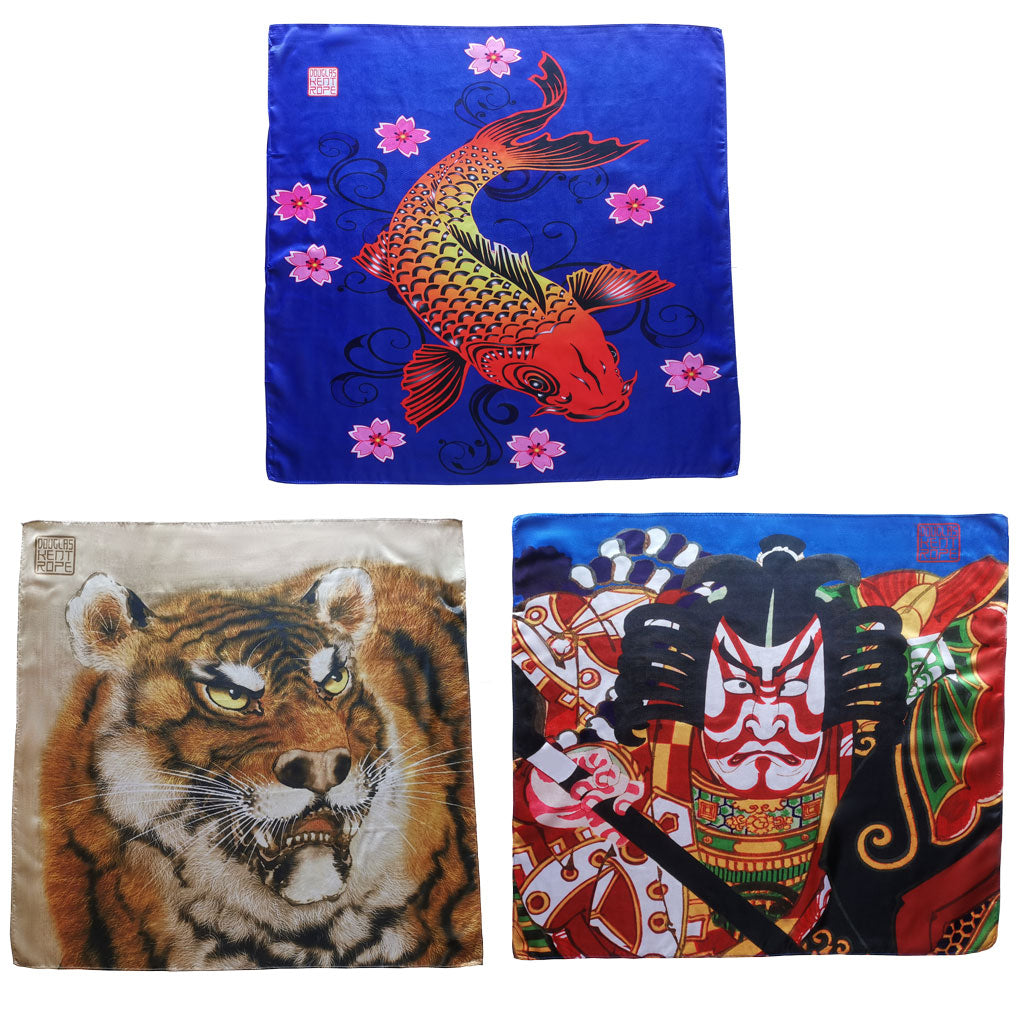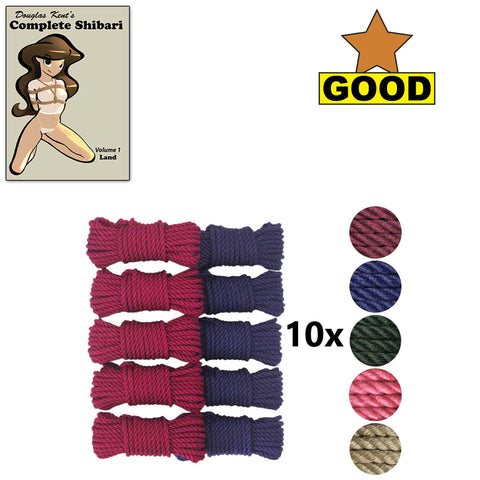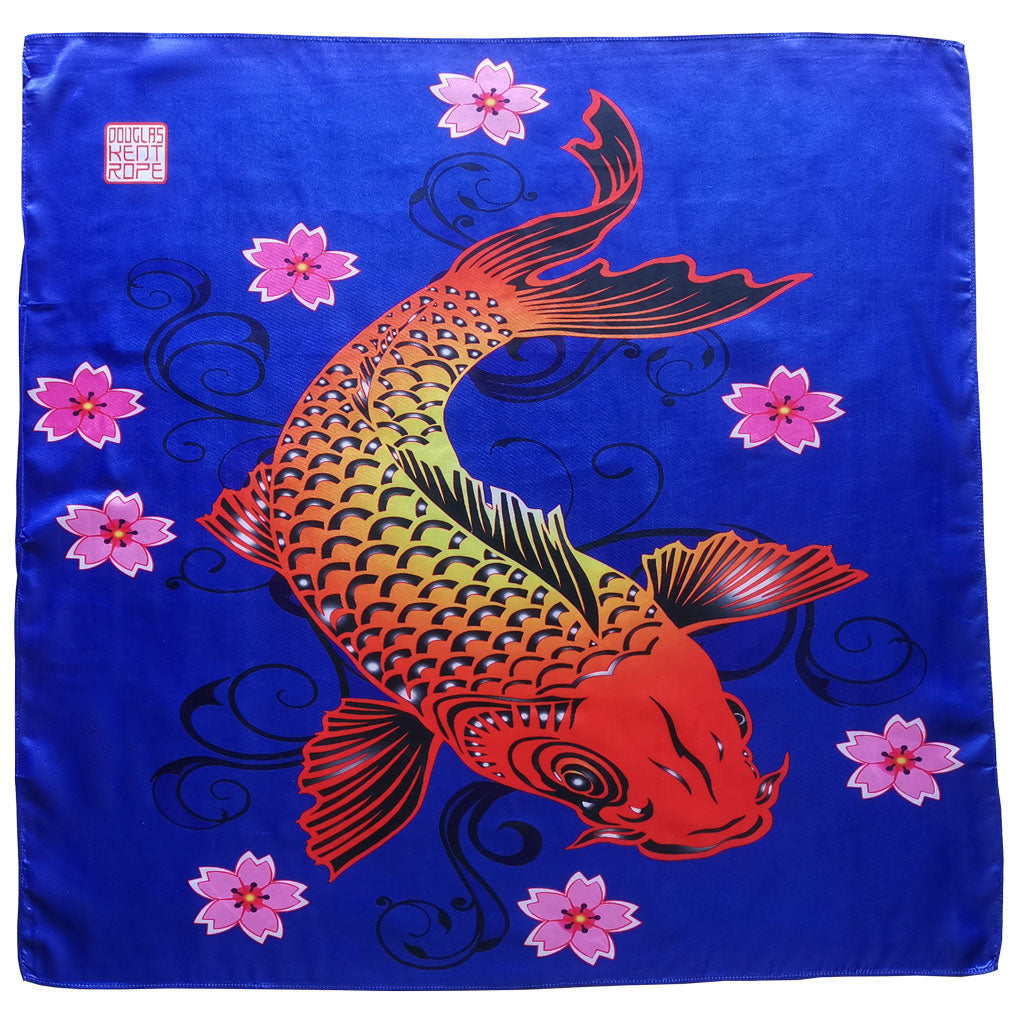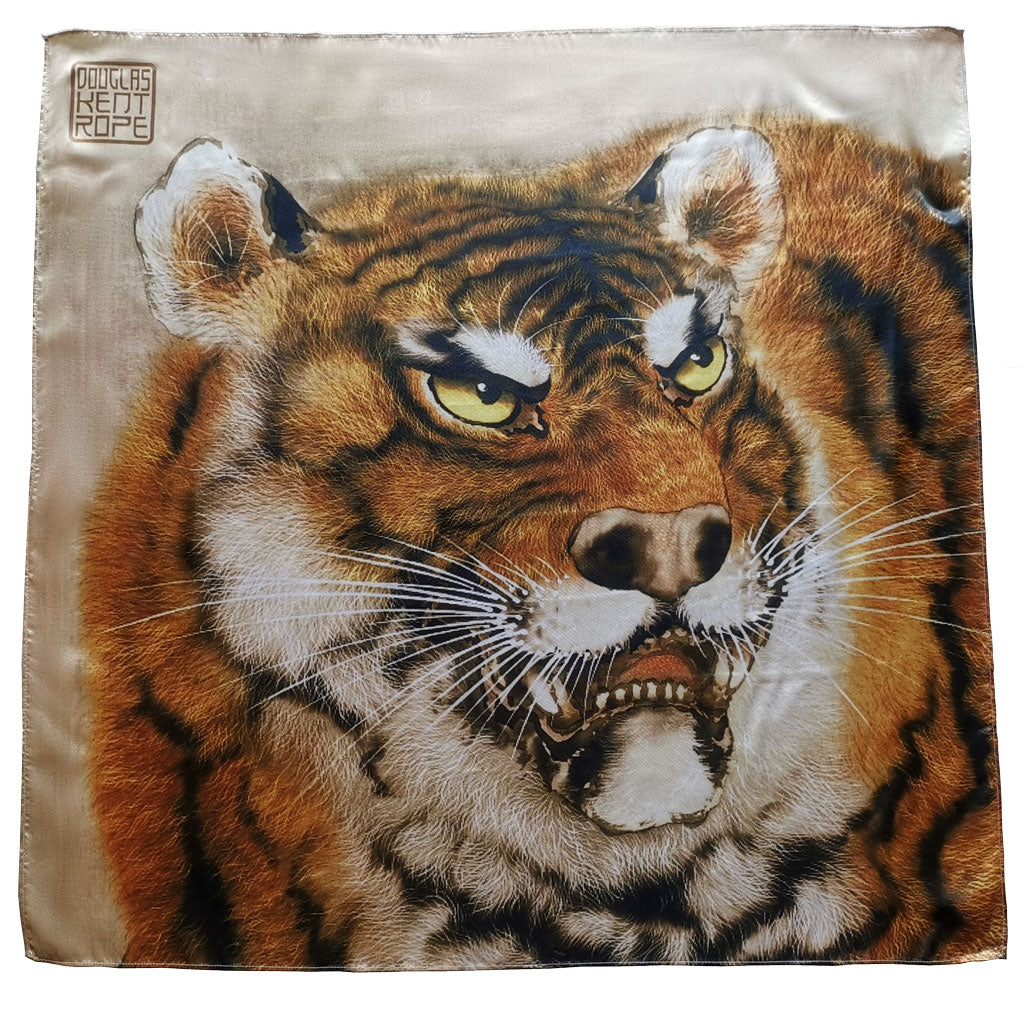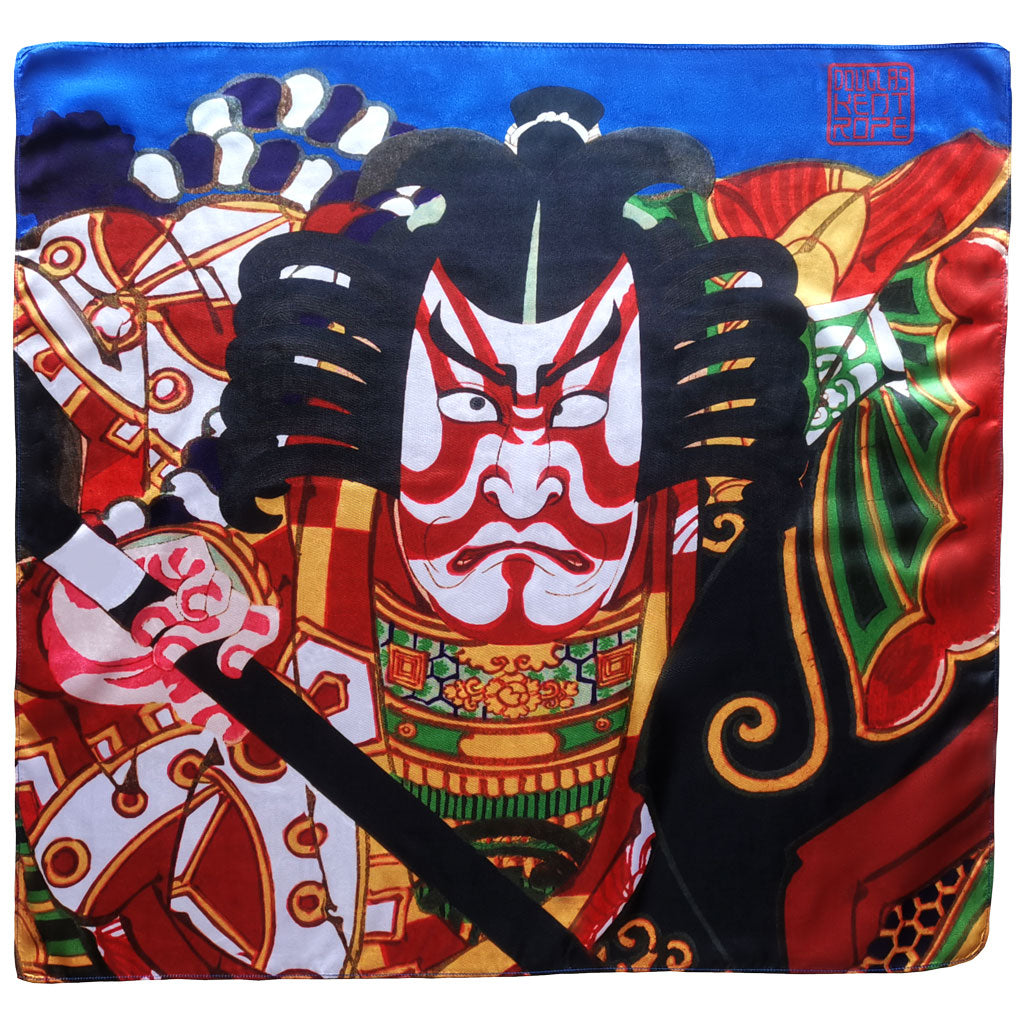Furoshiki
$30.00

Our custom furoshiki lets you carry 5-20 ropes... stylishly!
You can buy our furoshiki separately... or get them free with an order of 15 or more ropes!
History of furoshiki
Over 1,200 years ago, the Japanese washed themselves in public baths called sentō. However, leaving their clothes in a pile let them get dirty or mixed up with the clothes of other bathers. To keep them separate, bathers began bundling their clothes in square cloths called furoshiki. By the mid-Nara period (750 AD), they were commonly used.

Gradually, furoshiki began to also be used to bundle laundry and goods to protect and transport them.
As their use spread, they also were used to wrap gifts. Unlike wrapping paper, furoshiki are removed and immediately returned to the gift giver; furoshiki aren't considered part of the gift.
We break tradition a little bit - our furoshiki are shipped in packaging to keep them bright and clean. And whether you’ve bought the furoshiki, received it as a bonus, or been gifted it by someone else, we ask that you use it to carry your ropes rather than return it. We hope you don’t mind.
Modern furoshiki are made from silk, cotton, rayon, nylon, and other materials. Douglas Kent furoshiki are made of polyester (a form of nylon) because polyester has better stain, wear, and wrinkle resistance than cotton. Silk is too expensive for everyday use, even in Japan.
Furoshiki are very typically square. Their sizes aren't rigidly standardized, but there are common sizes. Douglas Kent furoshiki are quite large at 70 cm, which we found conveniently held 5-15 bundles of 8 m ropes.
Use
Furoshiki may be tied in many ways, depending on the shape of the object(s) being wrapped. Each furoshiki includes a free PDF booklet of instructions for techniques that are well suited for bundling rope. Click to preview Using Your Douglas Kent Furoshiki.
As you use it, your furoshiki will get dirty. Don't let it bother you! The furoshiki is protecting your rope! And while your rope can't easily be cleaned, your furoshiki is fine with machine wash.

Style A: Koi
Description: Orange Koi Beneath Sakura Cherry Blossoms On Blue
Our koi furoshiki features a koi swimming in a pond, beneath sakura cherry blossoms. In Japan, koi fish represent good fortune, abundance, and perseverance; cherry blossoms, renewal and the fleeting nature of life.
Koi fish have been selectively bred in China for over 1,000 years and in Japan for over 400 years. Koi, which we know as carp (and which are close evolutionary cousins of goldfish) have an average length of 100 cm. Although your childhood goldfish may have only lived a few weeks, koi are remarkably long lived, with some living for over 200 years.
Extensive breeding has made koi highly speciated. Varying species come in almost all colors, including white, black, blue, metallic gold, red, yellow, green, and of course, orange.
Our koi furoshiki is beautifully colored, with amazingly deep saturated colors (that are even more vibrant in person). The blue contrasts the orange and pink beautifully.
Our koi furoshiki takes the classic Japanese woodprint, and gives it a bright, bold, modern look!

Style B: Tiger
Description: Tiger head
Tigers feature prolifically in Edo period Japanese art. Kishi Gankyu (1756-1838) lived through the middle of the Edo period and made his name painting tigers.
However, even if you're not a mammologist, you probably know that tigers aren't indigenous to Japan. The prehistoric Panthera tigris trinilensis went extinct on the island roughly 1.2 MYA.
So why are there so many tigers in Japanese art? Quite simply, the Japanese thought tigers were cool.
Like other artists of his day, Kishi Gankyu probably never saw a live tiger, but rather studied the corpses and pelts that had been imported.
Objectively, tigers in ancient Japanese art aren't very accurate. Most resemble bears, dogs, or dragons. Many tigers were painted with disturbingly human-like faces or eyes.

Kishi Gankyu was better than most of his contemporaries but his artwork, Tiger and cub, suffers some of the same issues. In Tiger and cub, the adult tiger is stocky and lumpy, the adult's claws aren't retracted, and the cub looks like a miniaturized adult, without the neotenous features that makes tiger cubs so cute.
However, the details on the tiger's head are much more accurate because the skull helps retain a pelt's shape far better than the rest of the body.
Very clearly, Kishi Gankyu studied the pelt in detail. The meticulous reproduction of the fur on Kishi Gankyu's painting is absolutely exquisite. The eyes are alert and terrifyingly menacing.
Our furoshiki gently corrects the yellowing and aging from the 200-year-old original artwork, and focuses on the best part of the painting - the tiger's beautifully recreated face.
Kishi Gankyu painted tigers because he thought they looked cool. Looking at our tiger furoshiki, we wholeheartedly agree: tigers are cool!

Style C: Kabuki samurai
Description: Stylized Kabuki samurai in red armor with white accents
This work is called The actor Ichikawa Danjuro IX in the role of Ya no Negoro.
Kunichika Toyoharu (1835-1900) produced this artwork in 1893 as part of his series titled One Hundred Roles of Ichikawa Danjuro IX.
The IX in the name indicated that Ichikawa Danjuro IX was the 9th actor to take the name, in a continuous lineage spanning from the original actor, in 1660, to the 13th, who lives today and will take the stage in 2022 (delayed due to the pandemic). Most of the actors were direct blood relatives. Japanese history goes a long way back, yo.
Real samurai were outlawed in the Meiji Restoration of 1868 (during both the artist's and actor's lives). Ichikawa Danjuro IX is credited with saving Kabuki theater when Japan transitioned (somewhat unwillingly) from its feudal, class-based past to a modern world.
In reality, samurai looked nothing like the one depicted. Samurai and other characters were heavily altered and stylized for Kabuki theater.

Our samurai furoshiki features the bright, bold, saturated colors from Kabuki theater. In fact, because woodprint coloring tends to be a bit flat, our furoshiki probably better recreates the bold, shiny brightness of the actual actor's costume and makeup.
The Kabuki theater makeup was intended to induce fear in the samurai's opponents (and the audience). Looking at our furoshiki, we think you'll agree: this samurai isn't someone you'd want as your enemy. Now's your chance to have him on your side!
Beautiful, no matter which one you choose!
Our new furoshiki holds and protects your Douglas Kent rope perfectly, but we'll forgive you if you decide to hang your stylish furoshiki on your wall!
This product includes free worldwide shipping!

